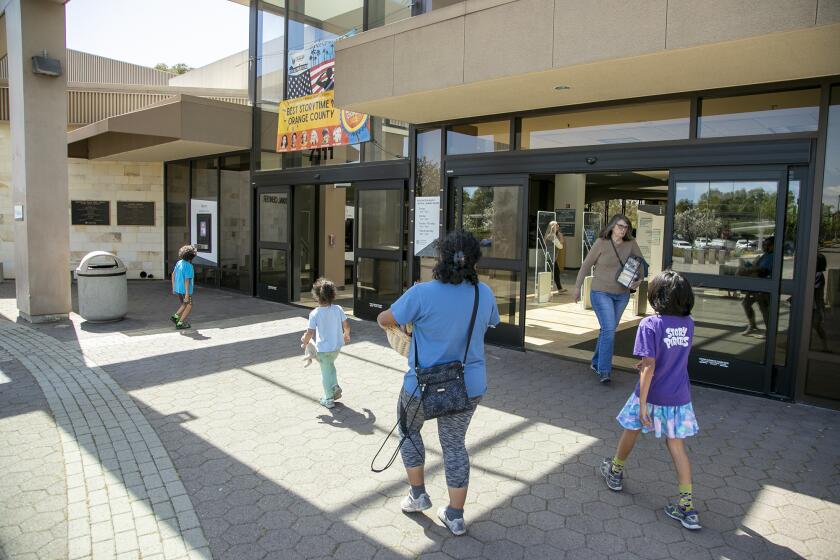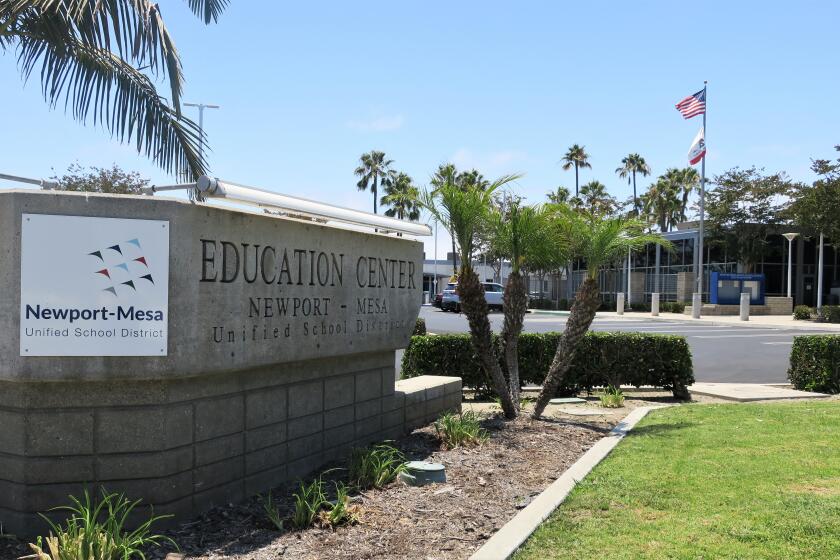Chasing Down The Muse: Dad lived by his own set of rules
- Share via
My father, Crofton Myles Cooper, was born July 11, 1925. While the date of his birth was never in question, the location was much challenged — by my father.
Dad wanted to tap into the advantages of dual Mexican-American citizenship. He told the story that my grandmother went into labor while she was at the Caliente racetrack (she loved the horses), and that he was born in a Tijuana hospital. My grandmother supposedly carried her newborn across the border, checked into a hospital in San Diego and obtained his birth certificate.
Neither the United States nor the Mexican government ever bought the story — nor did my grandmother — but Dad persisted that he was due Mexican rights.
One day after his 86th birthday, my dad took his last breath. His stories are now recast through photographs, recordings and the memories of his family and friends. Some are legendary, some mere bar room fodder.
In 1956, Dad dragged his wife, Kay, and three children, Gly, Claudia and me, to the shores of Lake Michigan in Wisconsin. It was here that we were to set up and run a summer camp.
The lake was beautiful, the ticks horrendous, the one-room schoolhouse for K-12 questionable, Dad’s new job as “Indian Chief” a sure deterrent, and the fact that there was no bar for 50 miles — the deal killer. The race back to California and Laguna Beach included a chase across Oklahoma by a tornado.
A vintage home at 421 Ledroit Lane was Dad’s first Laguna Beach project. The 50-year-old house was on 3 acres covered in fruit and towering Eucalyptus trees, and commanding a view of the Pacific Ocean. Dad replaced the electrical wiring and plumbing, stripped and hand-stained the woodwork, and installed a swimming pool and the first outdoor gas lamp in Laguna Beach.
The fact that Mom was driving a woodie with holes in the floorboards didn’t matter much. The kids had a place to run, build forts and swim like guppies. It was a mini Shangri-La.
Next on my dad’s radar was a 5-acre parcel on the top of Fayette Place. The only problem? The city wouldn’t give him a building permit.
This was pre-caisson construction, and there was no buildable pad. Dad’s story includes illegal immigrants, a load of midnight dynamite, a bulldozer and a level site. Voilà! Building permit in hand, 1570 Fayette Place grew to a beautiful 6,500-square-foot home with no neighbors and a hilltop to itself.
After the dynamite and grading, the land was naked. So Dad planted trees and then more trees. The tap from the city was “piss-poor,” to use his expression. The solution? “Borrow” from the Irvine Co. system behind the house. Suddenly, there was more pressure than a fire company would need.
The housing downturn of the mid-’60s left Dad with unrented/unsold apartment units in Anaheim. The great relocation of families from Los Angeles to Orange County had stalled.
The Fayette property was sold, the folks divorced and Dad moved to an A-frame on the sand at Ninth Street Beach. Not exactly rough. He drove a yellow De Tomaso sports car, had a new chick on his arm each night, and was the friend of every local bartender.
Never one to stay down, he bought some land on the beach in Baja and started a housing project. First on tap was to clear the beach of stones and use them to build a wall. Two years later, the stones were still on the beach, the wall was about a foot high and the project abandoned.
At the same time, he and friend Tom Harris opened a gambling casino in Ensenada. Gambling wasn’t legal, but they figured they had paid off the right folks. Opening night was an extravaganza. Local politicos showed up in their finery, with fancy cars and beautiful women. The crap tables were stand-up room only, and liquor poured freely.
What no one expected was an appearance by the Federales. The story goes that Dad and Tom ran to the Pacific Ocean, swam beyond the breakers and walked in the water all the way to San Diego.
If I had to describe Dad in a few words, they’d be: loving, kind, bars, babes and bucks. He lived hard, he lived wild, and mostly, he lived by his own set of rules.
At the end, my sister, Claudia, my son, Cooper, and I held his hands. Tom Harris’ son, Drake, and my husband, Steve, were at his side. We played Frank Sinatra on the boombox, toasted him with a round of Patrón, and even swabbed his tongue for one last cocktail.
We loved him past his last breath and into forever.
CATHARINE COOPER can be reached at cooper@cooperdesign.net.
All the latest on Orange County from Orange County.
Get our free TimesOC newsletter.
You may occasionally receive promotional content from the Daily Pilot.



